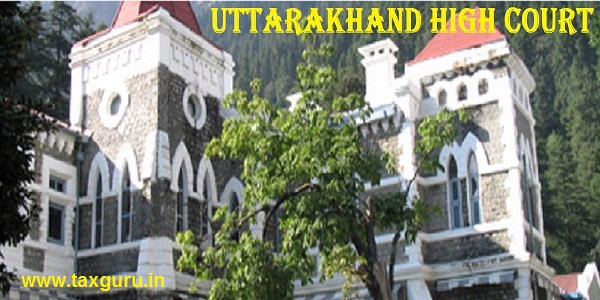While taking strong potshots at the judgment of the Labour Court, the Bombay High Court in a learned, laudable, landmark, logical and latest judgment titled Bombay Dyeing & Manufacturing Co. Ltd. Vs Mr Yogesh Vinayak Tipre in Writ Petition No. 4916 of 2007 and cited in Neutral Citation No.: 2024:BHC-AS:21686 that was reserved on May 2, 2024 and then finally pronounced on May 9, 2024 has minced just no words to hold in no uncertain terms that the penalty of dismissal from service is disproportionate for being absent from the place of work for just a few hours. It must be mentioned here that the workman who was employed as an Accounts Assistant (Weighbridge) in the Petitioner’s DMT factory was issued a show cause notice on 30 June 1999 in which misconduct was alleged for absence during a heavy workload period without permission. He admitted himself to being in canteen from 15:00 to 15:30 for refreshments engaging with superiors in the Accounts Department from 15:40 to 16:24 due to hunger and receiving a relative during shift change time. The Bombay High Court very rightly held that the penalty of dismissal was shockingly disproportionate and excessive in light of the gravity of the proven misconduct.
At the very outset, this pertinent, pragmatic, progressive and powerful judgment authored by the Single Judge Bench comprising of Hon’ble Mr Justice Sandeep V Marne of Bombay High Court sets the ball in motion by first and foremost putting forth in para 1 that, “Petitioner-Bombay Dyeing & Manufacturing Co. Ltd. has filed this Petition challenging the Award dated 26 April 2007 passed by Presiding Officer, Labour Court, Mahad by which the Respondent is held entitled for reinstatement at his original post with continuity and full backwages with effect from 24 September 1999.”
To put things in perspective, the Bench envisages in para 2 that, “Petitioner is engaged inter alia in manufacturing of Di-Methyl Terephthalate (DMT), which is a raw material for manufacturing synthetic yarn. Petitioner has a DMT manufacturing plot at Patalganga, District Raigad. Respondent was employed as Accounts Assistant (Weigh bridge) in Petitioner’s DMT factory. While so working, Respondent was issued with a show cause notice dated 30 June 1999 alleging that on 28 June 1999, while being deployed to work in 1st shift duty from 7.00 a.m. to 3.00 p.m., he also continued to perform duty in the 2nd shift from 3.00 p.m. onwards on overtime. That there was heavy workload on account of month end and it was observed that from 2.48 p.m. to 4.24 p.m., he was not present at workplace without permission and without any reason. That on account of Respondent’s absence, more than dozen loaded trucks could not go out. It was further alleged that when the General Manager visited weigh bridge to assess the situation at 5.40 p.m., he noticed that Respondent had gone to canteen keeping the work in abeyance and returned from canteen only at 6.05 p.m. Respondent was informed that his conduct needs to be investigated by issuing him charge sheet and conducting domestic enquiry. He was placed under suspension by composite show cause notice-cum-suspension Order dated 30 June 1999.”
Do note, the Bench notes in para 16 that, “Petitioner thus specifically admitted that the allegation of absence from 14.48 p.m. to 16.40 p.m. was correct. He also admitted that he was in canteen from 15.00 p.m. to 15.30 p.m. for having tea and snacks and from 15.40 to 16.24 p.m. he was in Accounts Department discussing with his superiors as he was hungry and during shift change time, a relative had come to visit him. In addition to admitting the absence, he is specifically stated that since his absence was a first time occurrence the same was pardonable and he apologized for his conduct. What is material is in the fact that Respondent never disowned contends of his reply dated 1 July 1999 and, on the contrary, admitted in his cross examination as under:
“My reply Date 01/07/99 is filed by the Company along with enquiry proceeding. Whatever stated in this reply dated 01/07/99 in respect of incident dated 28 June 1999 are true and correct. It is true that in respect of the incident dated 28 June 1999. I have stated that the occasion be pardonable and I am sorry for the incident”.”
While taking potshots at the findings of the Labour Court, the Bench enunciates in para 17 that, “Despite above clear admissions in reply to the show cause notice, in addition to specific evidence of as many as four witnesses, the Labour Court proceeded to discard the entire evidence on record by recording a vague finding in para 13 of the Award as under:
“13. I have carefully gone through the oral evidence of management witness Nos. 3 & 4 and I notice that their evidence are not at all helpful to the Company’s case. Moreover their evidence are not cogent, reliable and acceptable.””
Most intriguingly, the Bench points out in para 18 that, “What is most shocking is refusal by the Labour Court to take into consideration the charge sheet dated 8 July 1999 and show cause notice dated 30 June 1999 on the ground that their authors were not examined and in ordering their de-exhibition. In para 14 of the Award, the Labour Court has held as under:
“14. It is pertinent to note there that since the 1st Party Company has not proved their documents through their witness i.e. particularly the chargesheet dtd. 08/07/1999 and show-cause notice dtd. 30/.6/1999. The 1st Party Company tried to got examined the said documents through the 2nd Party workman. The Learned Counsel Mr. L.A. Sawant has strongly objected to exhibit these documents. According to me the documents should be proved through the author of the documents and not any other witness. Having regard of this fact, I am of the view that the objection raised by Mr. Sawant, Adv. For 2nd Party having substance and therefore, the documents which are exhibited are now “D” exhibited.””
Be it noted, the Bench notes in para 19 that, “The above finding recorded by the Labour Court are shocking to say the least. Issuance of charge sheet and show cause notice were not under dispute. Respondent replied both charge sheet as well as show cause notice. Therefore, there was no requirement of examining authors of the charge sheet and the show cause notice when Respondent had never disputed its existence. He had replied both of them and his replies were remarked as Exhibits. In such circumstances, the Labour Court committed gross error in directing removal of marking of the charge sheet and the show cause notice as Exhibits.”
Most significantly, the Bench mandates in para 22 propounding that, “After going through the past misconduct, it is seen that in respect of four incidents, mere warning/ caution letters were issued. In respect of the rest of the two incidents, penalty of his suspension for 4 and 2 days was imposed. In my view, none of the 6 past misconducts were serious. I am therefore of the view that penalty of dismissal from service is not commensurate with gravity of misconduct proved against Respondent.”
What’s more, the Bench then further directs in para 23 that, “Having held that the punishment of dismissal imposed on Respondent is disproportionate, the next issue is the nature of relief that can be granted in favour of Respondent at this stage. It appears that the age of Respondent is now 54 years. He is out of employment of Petitioner since 24 September 1999 and by now period of about 25 long years has elapsed. In that view of the matter and considering long litigation that has an ensued between the parties, I am of the view that it would not be in the interest of Respondent himself to work with the Petitioner. Instead, award of lump sum compensation to the Respondent would meet the ends of justice.”
It is worth noting that the Bench postulates in para 24 that, “The next issue is about the quantum of lumpsum compensation to be awarded to Respondent. It is not that Respondent had rendered considerable period of service prior to his termination. He also delayed raising of Industrial Dispute. He first sought to adopt the remedy under Maharashtra Recognition of Trade Unions and Prevention of Unfair Labour Practice Act, 1971 and filed compliant of unfair labour practice, which was dismissed and in revision, the dismissal of compliant was upheld. He later raised a demand for industrial dispute. It is not that Respondent is completely exonerated of the charges levelled against him. The charges are in fact proved. This factor also needs to be considered while determining the amount of lumpsum compensation payable to him. His last drawn wages were Rs.7,584/- which he has drawn during pendency of the present Petition. Mr. Jalisatgi he has placed on record statement of wages paid to Respondent during the years 2007 till date and the total amount paid to him Rs.15,16,800/-. In my view, further amount of Rs.25,00,000/- shall be paid by Petitioner to Respondent towards lumpsum compensation. considering the amount of wages of Rs.15,16,800/- already paid to Respondents, payment of further compensation of Rs.25,00,000/- would make total amount paid to him at Rs.40,16,800/-.”
All told, we thus see that it is quite discernibly clear that the Bombay High Court in this leading judgment has very rightly slammed the Labour Court for the dismissal of the petitioner from service for being absent from place of work for just few hours and condemned the punishment as disproportionate! In such cases, there should be ideally no punishment or the punishment should be very mild. Dismissal from service in such cases cannot be justified by any court. This is the bottom-line of this notable judgment. No denying it!



























